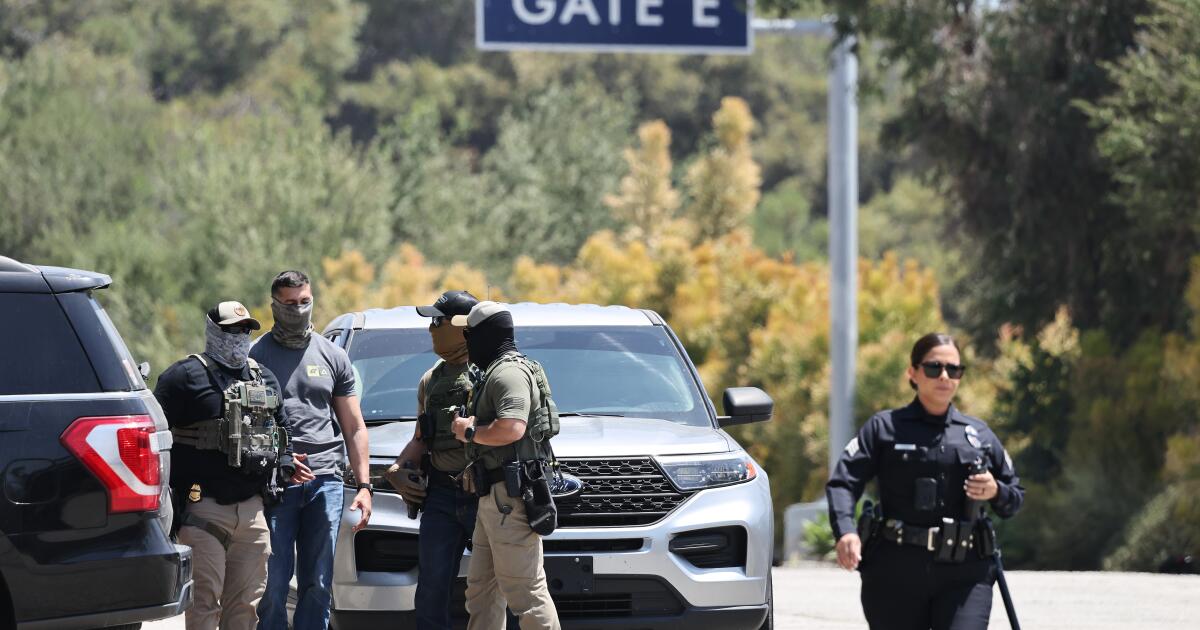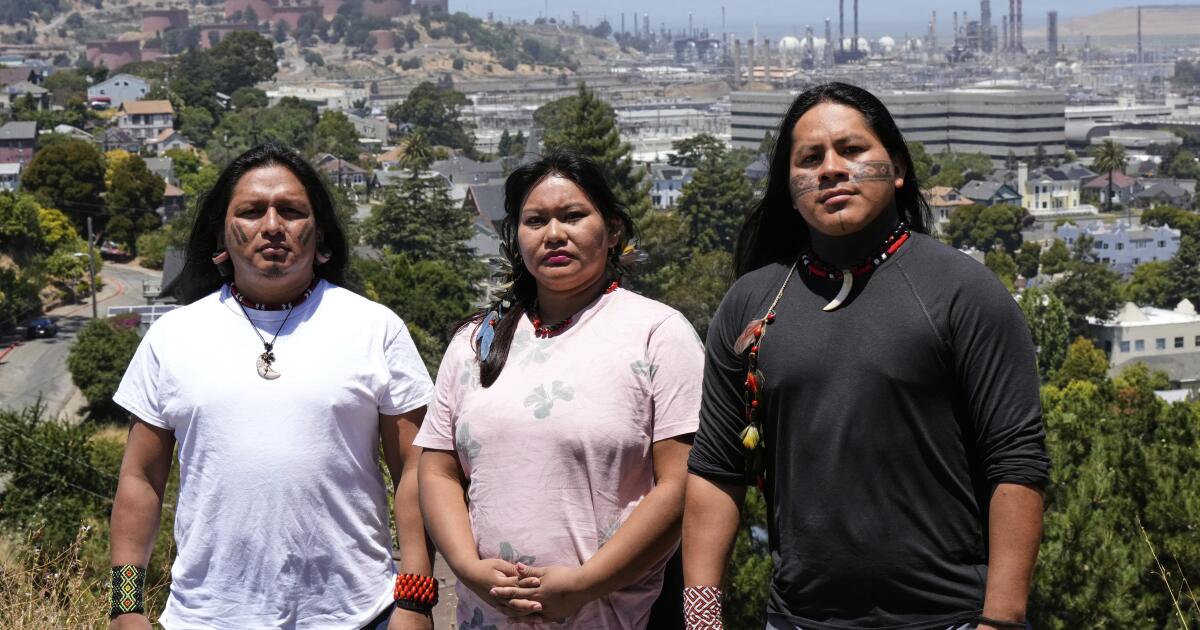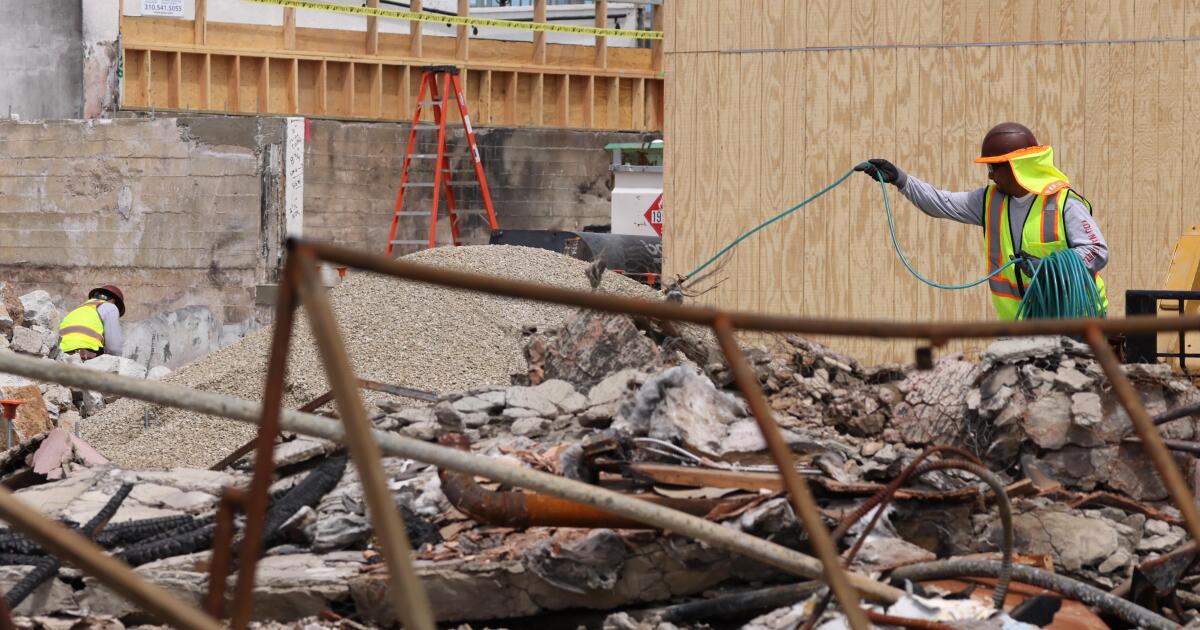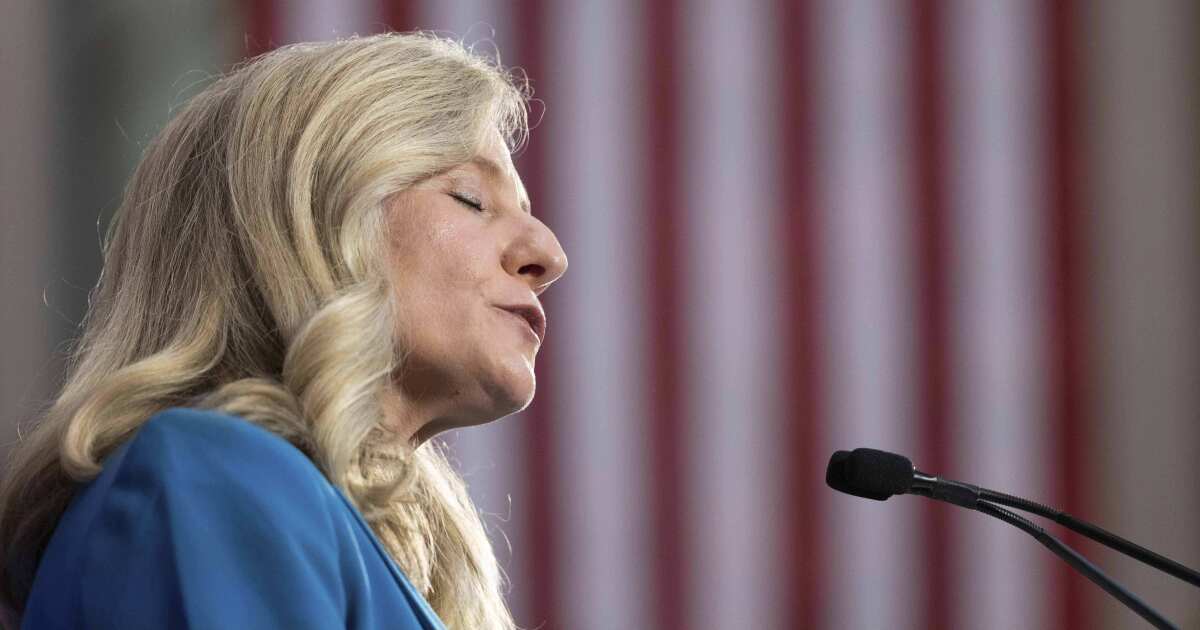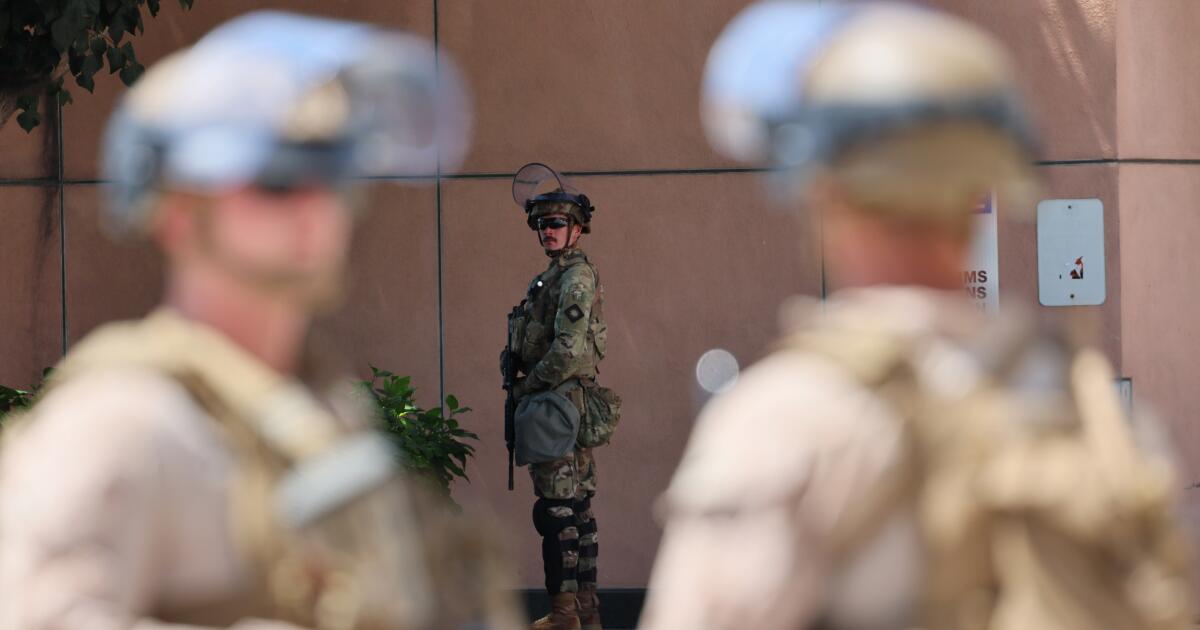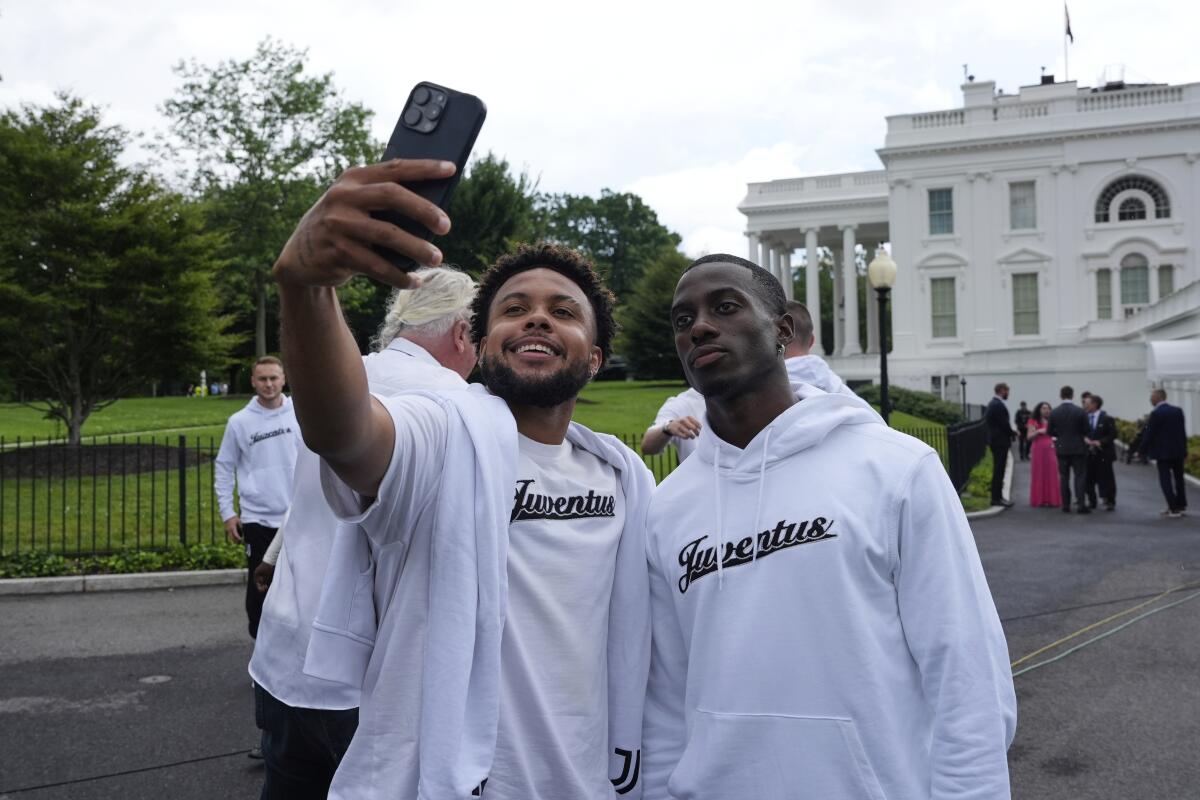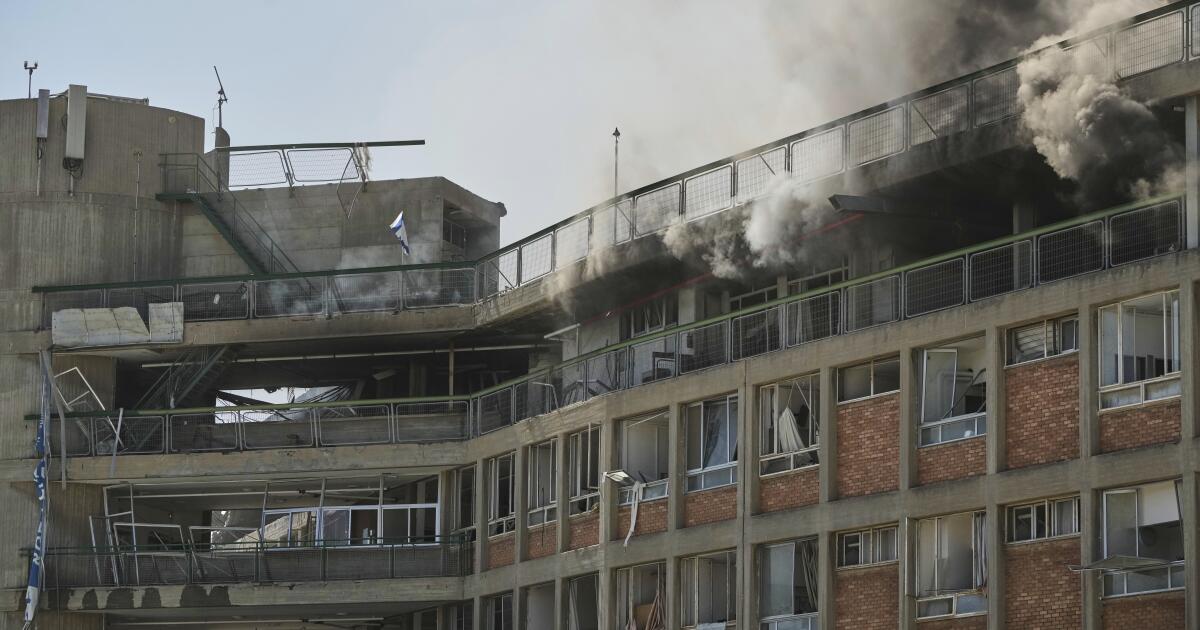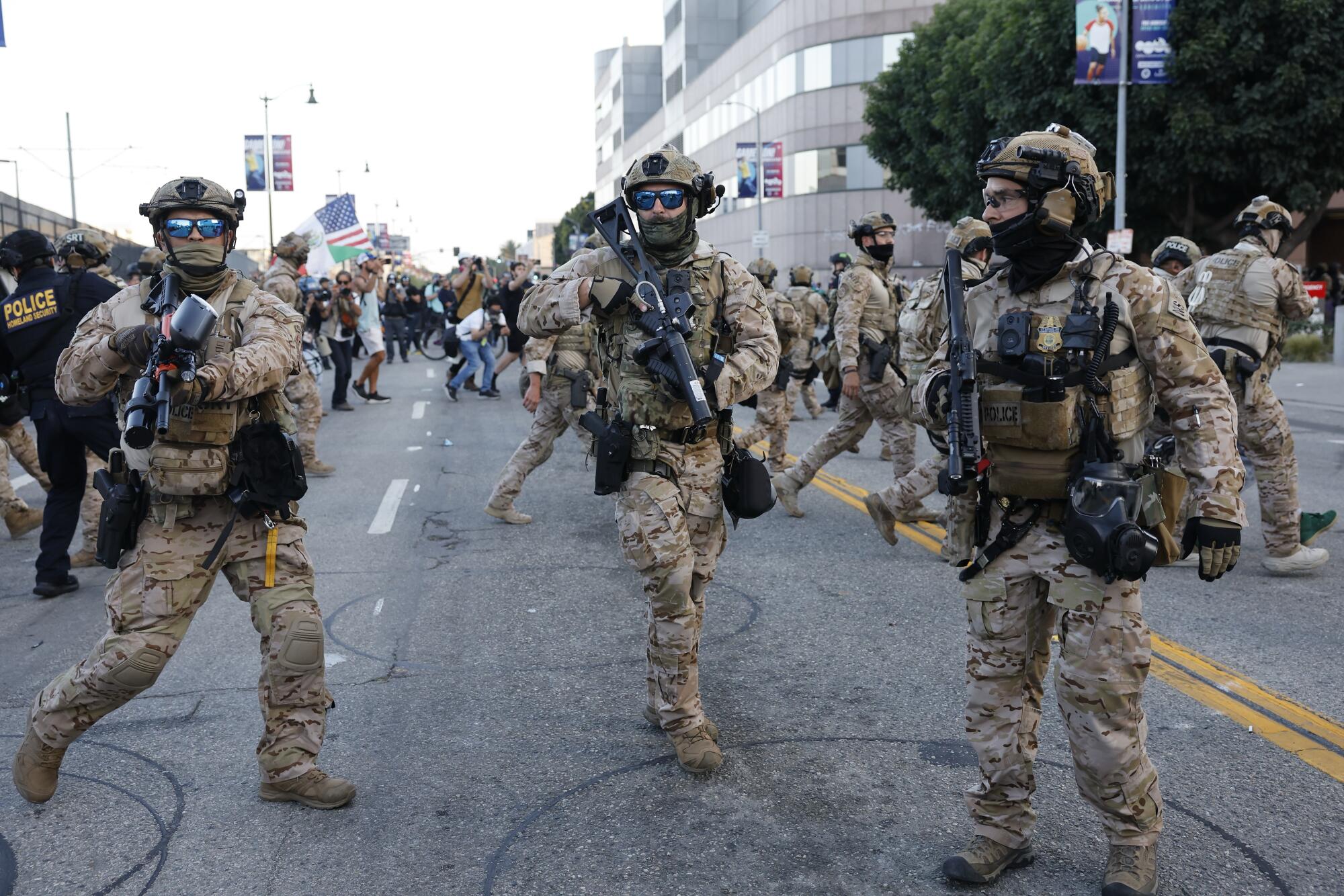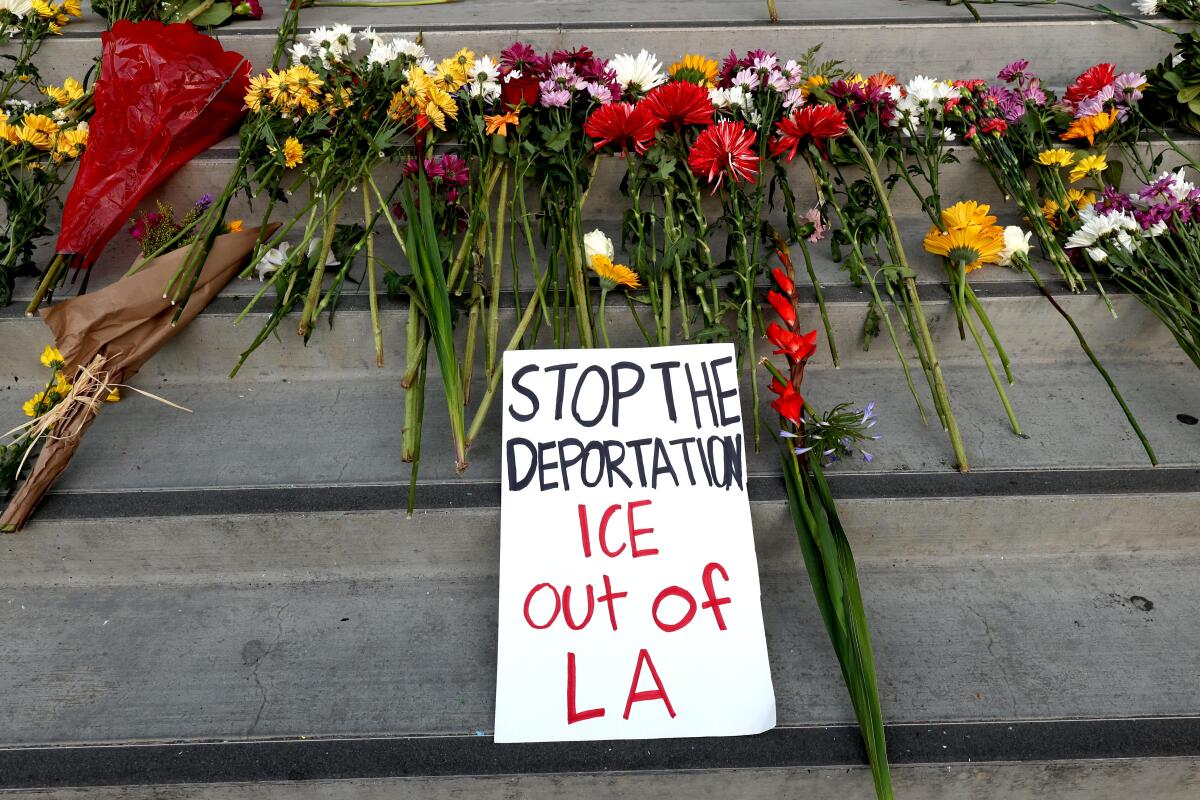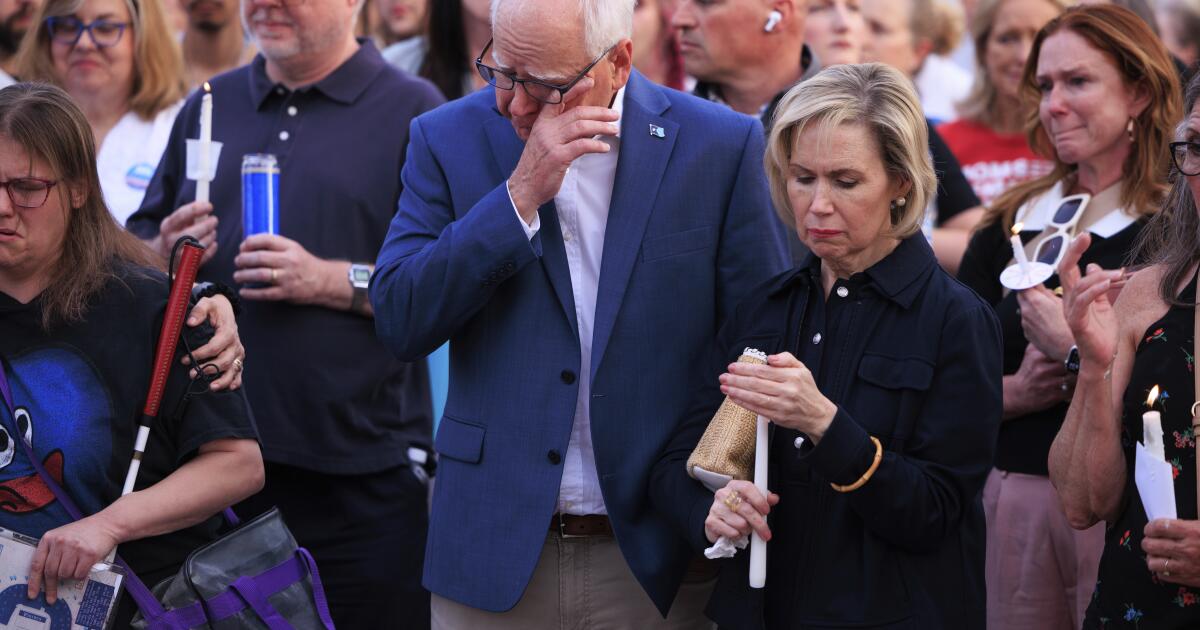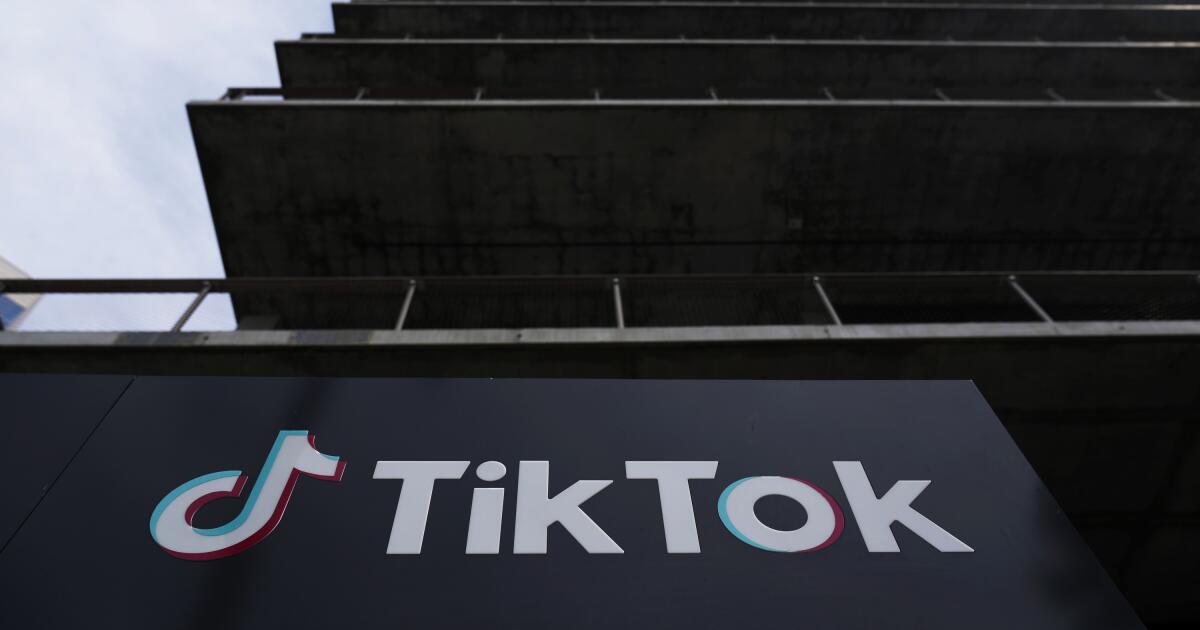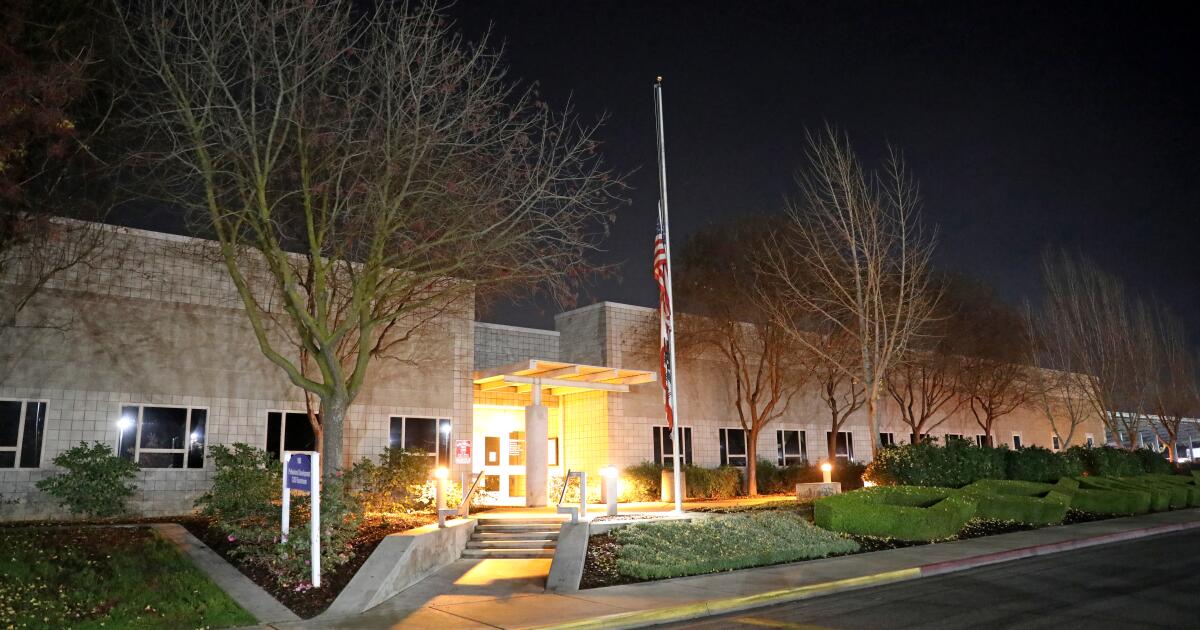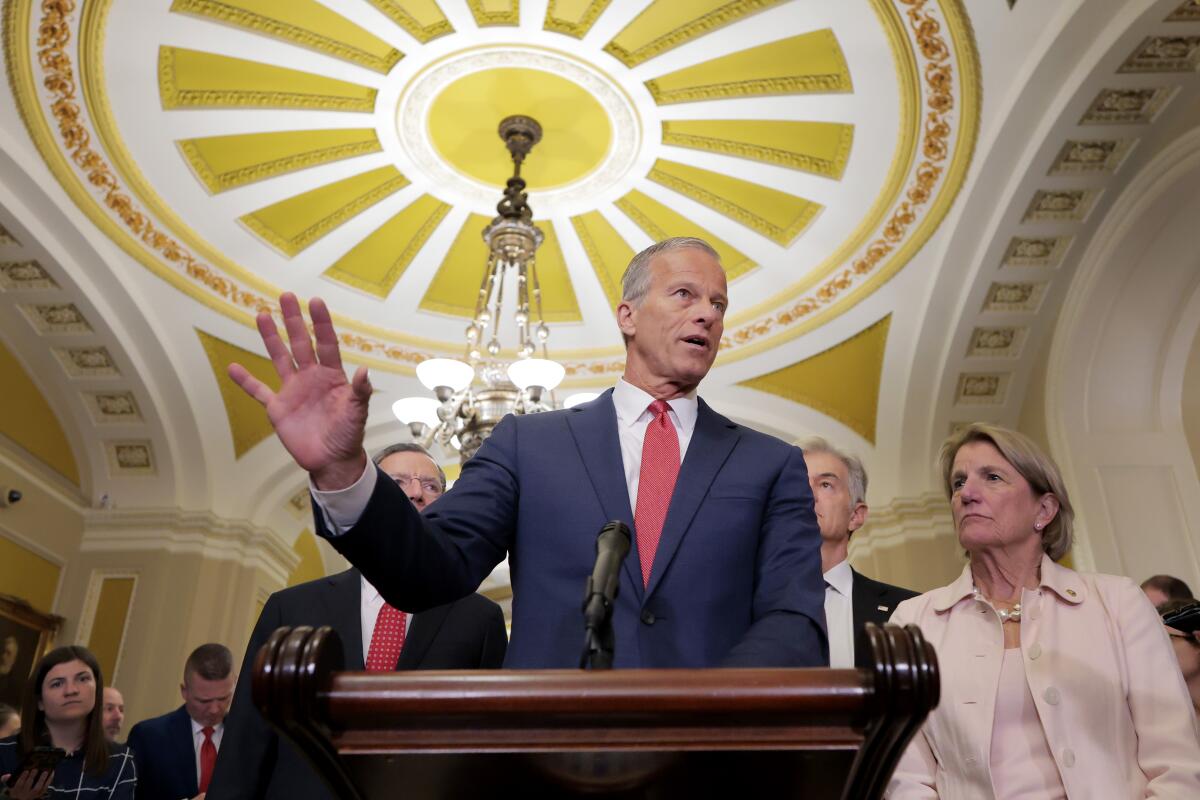Contributor: By wearing masks, immigration agents undermine authority and endanger us all
On Tuesday, New York City Comptroller Brad Lander was arrested by several masked Immigration and Customs Enforcement agents at a courthouse in Manhattan as he attempted to steer an individual past immigration authorities. That same day, masked agents outside a Walmart in Pico Rivera detained two individuals — one a target of immigration enforcement, the other a U.S. citizen who tried to intervene.
These two scenes from opposite sides of the country illustrate what has become a more common problem: federal agents wearing masks to avoid recognition. On Thursday, masked individuals said to be affiliated with the Department of Homeland Security descended on a Home Depot in Hollywood and on Dodger Stadium.
Masking is not good law enforcement practice. It may contradict Homeland Security regulations, while potentially providing cover for some officers to violate constitutional and civil rights. It undermines agents’ authority and endangers public safety as well.
The federal government has no specific policy banning immigration agents from wearing masks. But the fact that such practice is not illegal does not make it acceptable. Department of Homeland Security regulations require immigration officers to identify themselves during an arrest or, in cases of a warrantless arrest, provide a statement explaining how they identified themselves. The use of masks seems to violate the intent of these directives for identification.
ICE agents in masks are becoming disturbingly routine. There were ICE agents in masks at the Los Angeles immigration protests recently, just as there have been at enforcement actions in Minneapolis, Boston, Phoenix and across the country. In March a video of Rumeysa Ozturk, a doctoral student at Tufts University, being detained by masked officers on the street went viral.
There seems to be no uniformity in the face coverings immigration agents wear, which has included ski masks, surgical masks, balaclavas and sunglasses. Such inconsistency across a federal workforce flies in the face of sound policing. Masked agents can confuse both bystanders and ICE targets, which risks people interfering with enforcement actions that look more like kidnappings. The International Assn. of Chiefs of Police has warned that the public “may be intimidated or fearful of officers wearing a face covering, which may heighten their defensive reactions.”
Todd Lyons, acting director of ICE, said earlier this month that immigration agents wear masks to protect themselves. “I’m sorry if people are offended by them wearing masks,” he said, “but I’m not going to let my officers and agents go out there and put their lives on the line, their family on the line, because people don’t like what immigration enforcement is.”
Yet law enforcement jobs come with an assumption of exactly that risk. Consider that the overwhelming majority of police officers, sheriffs and FBI agents fulfill their duties without concealing their faces. Correction officers who deal with prisoners do not wear masks, nor do judges who administer our laws. Because these public employees have such tremendous power, their roles require full transparency.
Besides, ICE agents are increasingly targeting noncriminals, which mitigates the argument that agents require masks for safety. According to the research site Transactional Records Access Clearinghouse, about 44% of people in ICE detention as of June 1 have no criminal record.
When ICE agents wear masks, there can be unintended consequences. Lately, there has been a spike in people impersonating agents and engaging in harassment, assault and violence. In April, a Florida woman wore a mask as she posed as an ICE agent and attempted to kidnap her ex-boyfriend’s wife.
Ironically, the Trump administration has a double standard around the idea of people wearing masks. It has demanded that universities bar students from wearing masks during protests. In the aftermath of the Los Angeles immigration protests, the president posted on social media, “From now on, MASKS WILL NOT BE ALLOWED to be worn at protests.” Shouldn’t that principle be applied to both sides?
True, it makes sense for immigration agents to use face coverings when they are making arrests of a high-profile target or conducting an undercover operation. However, masking should be the exception, not the norm. If ICE agents are conducting their duties anonymously, they open the door to potential civil rights and due process violations. The practice gives impunity to agents to make unlawful arrests, without the possibility of public accountability.
Masking can also be seen as a show of intimidation by immigration agents — whether their target is an undocumented migrant or an American citizen, like Newark Mayor Ras Baraka, who was arrested outside a New Jersey detention facility in May. Masked ICE agents give the impression of being a secret police force, which is not good for our democracy.
Last week, two Democratic lawmakers in California introduced a bill that would bar local, state and federal law enforcement officers in California from wearing masks on duty (with certain exceptions). Although this is a step in the right direction, it remains unclear whether such a state measure could be applied to federal agents. Congress should ban the use of masks by immigration agents.
ICE officers should not be allowed to conceal their faces. The public’s need for accountability strongly outweighs any rationale for agents’ anonymity.
Raul A. Reyes is an immigration attorney and contributor to NBC Latino and CNN Opinion. X: @RaulAReyes; Instagram: @raulareyes1
